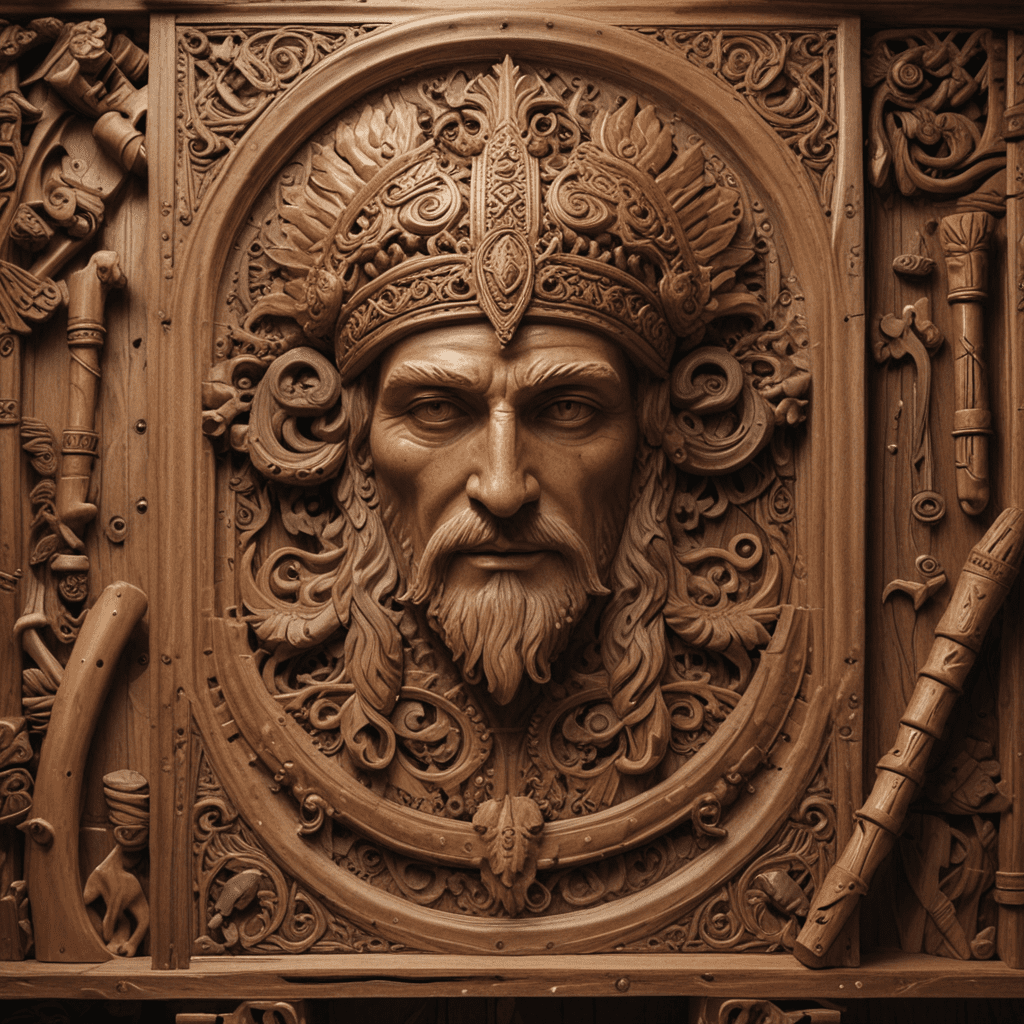1. Introduction
Slavic mythology, deeply rooted in the reverence for nature, places significant importance on the art of woodworking and carpentry. Since ancient times, Slavs have had a profound connection with forests and trees, believing them to possess sacred qualities. Woodworking thus became an integral part of their culture, intertwined with their daily lives, rituals, and spiritual beliefs.
2. The Patron Deity of Craftsmen: Perun
In Slavic mythology, Perun, the mighty god of thunder and lightning, is revered as the protector of craftsmen. He is believed to possess immense strength and skill, inspiring artisans with his divine abilities. Craftsmen often invoked Perun's blessings for success in their work, seeking his guidance and protection against misfortune. Shrines and idols dedicated to Perun were frequently found in workshops, where artisans paid homage to their patron deity.
3. Woodworking and Carpentry in Slavic Folklore
Slavic folklore abounds with stories and tales that celebrate the exceptional skills of craftsmen. Legendary figures such as Drevlyana, the cunning carpenter, and Luban, the master builder, are renowned for their extraordinary abilities and ingenuity. These tales often incorporate magical elements, with wood possessing transformative properties and granting special powers to its wielders.
4. The Use of Wood in Slavic Architecture
Wood has been the primary building material in Slavic architecture for centuries. The iconic izba, or log cabin, is a testament to the skill and craftsmanship of Slavic carpenters. Izbas are constructed from massive logs, carefully fitted together to create sturdy and resilient dwellings. Ornate carvings and decorations adorn the exteriors, reflecting the artistry and cultural significance of Slavic woodworking.
5. Wooden Sculptures in Slavic Mythology
Slavic mythology is replete with references to wooden sculptures, ranging from idols to talismans and protective figures. These carvings served both functional and spiritual purposes. Idols represented deities and mythical creatures, while talismans and protective figures were believed to ward off evil spirits and bring good fortune. The symbolism and intricate craftsmanship of these sculptures reflected the deep connection between Slavs and the natural world.
6. Wooden Furniture and Household Objects
In Slavic homes, wooden furniture and household objects were not only essential for everyday use but also held significant cultural and aesthetic value. Traditional furniture often featured intricate carvings and decorative elements that showcased the skills of the craftsmen. Tables, chairs, beds, and chests were all crafted from locally sourced wood, ensuring durability and a connection to the surrounding environment. In addition, wooden utensils, such as spoons, bowls, and plates, were commonly used, adding a touch of warmth and artistry to everyday meals.
7. Slavic Rituals and Woodworking
Woodworking played a crucial role in various Slavic rituals and ceremonies. Wooden objects were often used as symbols of protection and good fortune. For instance, during the Kupala Night festivities, bonfires were built from sacred woods, believed to possess purifying and healing properties. Similarly, in wedding rituals, wooden charms and amulets were exchanged as tokens of love and prosperity. The use of wood in Slavic rituals reflects the deep-rooted belief in its sacred and transformative qualities.
8. The Transmission of Craftsmanship
The knowledge and skills of Slavic woodworking were passed down through generations via the apprentice-master system. Aspiring craftsmen would seek out experienced masters to learn the intricacies of the craft. Apprentices spent years observing, assisting, and honing their skills under the guidance of their mentors. This system ensured the preservation of traditional techniques and designs, contributing to the continuity of Slavic woodworking heritage.
9. Modern-Day Relevance of Slavic Woodworking
While Slavic woodworking traditions have evolved over time, their influence remains evident in modern-day art and design. Contemporary Slavic artists draw inspiration from ancient mythology and symbolism, incorporating them into their carvings, sculptures, and furniture. This revival of traditional crafts has led to a renewed appreciation for the beauty and functionality of Slavic woodworking.
10. Conclusion
The art of woodworking and carpentry has been an integral part of Slavic culture for centuries. From the patronage of Perun, the god of thunder, to the creation of intricate sculptures and functional objects, wood has played a vital role in Slavic folklore, architecture, rituals, and daily life. The enduring legacy of Slavic woodworking lies in its ability to connect people to nature, preserve cultural heritage, and inspire creativity. As a testament to its significance, Slavic woodworking continues to captivate and enchant generations, serving as a reminder of the deep bond between humanity and the natural world.
FAQ
Q: Who is the patron deity of craftsmen in Slavic mythology?
A: Perun, the god of thunder and lightning, is revered as the protector of craftsmen and their works.
Q: What is the significance of wood in Slavic architecture?
A: Wood has been the primary building material in Slavic architecture for centuries, with the iconic izba, or log cabin, being a testament to the skill and craftsmanship of Slavic carpenters.
Q: What types of wooden sculptures are found in Slavic mythology?
A: Wooden sculptures in Slavic mythology range from idols representing deities and mythical creatures to talismans and protective figures believed to ward off evil spirits and bring good fortune.
Q: How was woodworking knowledge passed down in Slavic culture?
A: Woodworking knowledge and skills were passed down through generations via the apprentice-master system, where aspiring craftsmen learned from experienced masters.
Q: Is Slavic woodworking still practiced today?
A: Yes, Slavic woodworking traditions have evolved over time and continue to be practiced by contemporary Slavic artists who draw inspiration from ancient mythology and symbolism in their work.



